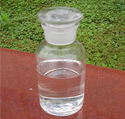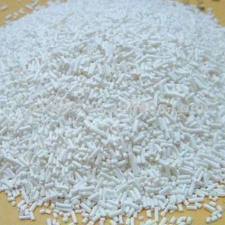Products
 News
NewsRecrystallization acid
The crude acid was added 1mol 1g beaker, 50ml of distilled water was added, the medium is heated with stirring to asbestos, the crude acid was dissolved, and then add a small amount of distilled water was totally dissolved. Then, using the short-necked glass funnel while hot solution is filtered into another 100ml beaker, and the filtrate was allowed to stand, allowed to cool slowly crystallized crystals were filtered off.
1. The crude acid status:
2. Experimental observation of phenomena filtrate upon cooling:
3. After recrystallization acid status:
A: The crude acid 1g was added 1mol beaker, 50ml of distilled water was added, the medium is heated with stirring to asbestos, the crude acid was dissolved, and then add a small amount of distilled water was totally dissolved. Then, using the short-necked glass funnel while hot solution is filtered into another 100ml beaker, and the filtrate was allowed to stand, allowed to cool slowly crystallized crystals were filtered off.
1. Status of crude benzoic acid: The crude acid is a solid powder fine particle state,
2. Experimental observation of phenomena filtrate cooling: In the process of cooling the solution becomes cloudy,
Since the solubility of benzoic acid at room temperature for a relatively small reason to reach a certain time, it is crystal precipitation is benzoic acid
3. After recrystallization acid status: scaly or needle-like crystals
Its properties are: a benzene or formaldehyde odor. Flammable. The relative density of 1.2659 (15/4 ℃). Melting point 122.4 ℃. Boiling point of 249 ℃. Sublimation at 100 ℃. The refractive index nD (32 ℃) 1.504. Volatile vapors. Flash point (closed cup) 121 ~ 123 ℃. Slightly soluble in water, soluble in ethanol, methanol, ether, chloroform, benzene, toluene, carbon disulfide, carbon tetrachloride and turpentine
Usually made of sodium benzoate salts, used as a preservative.






